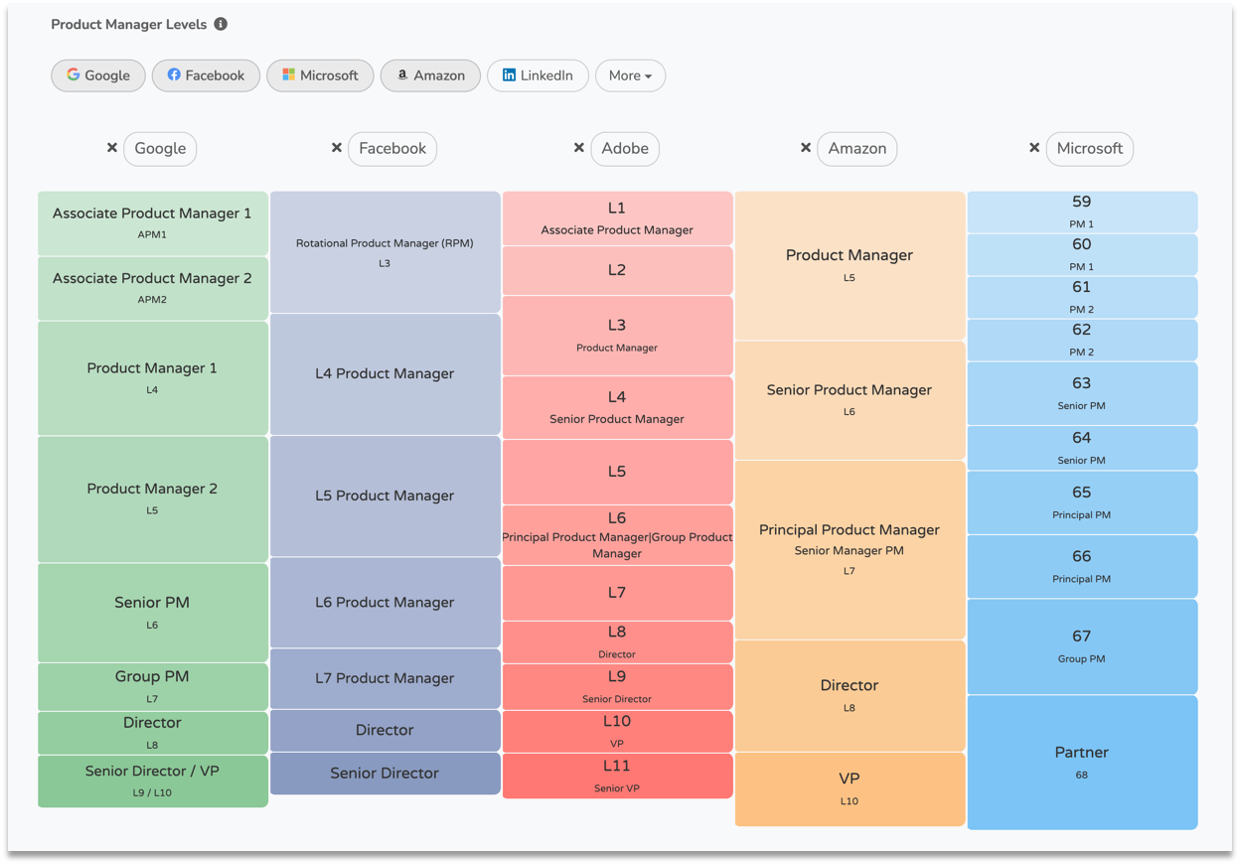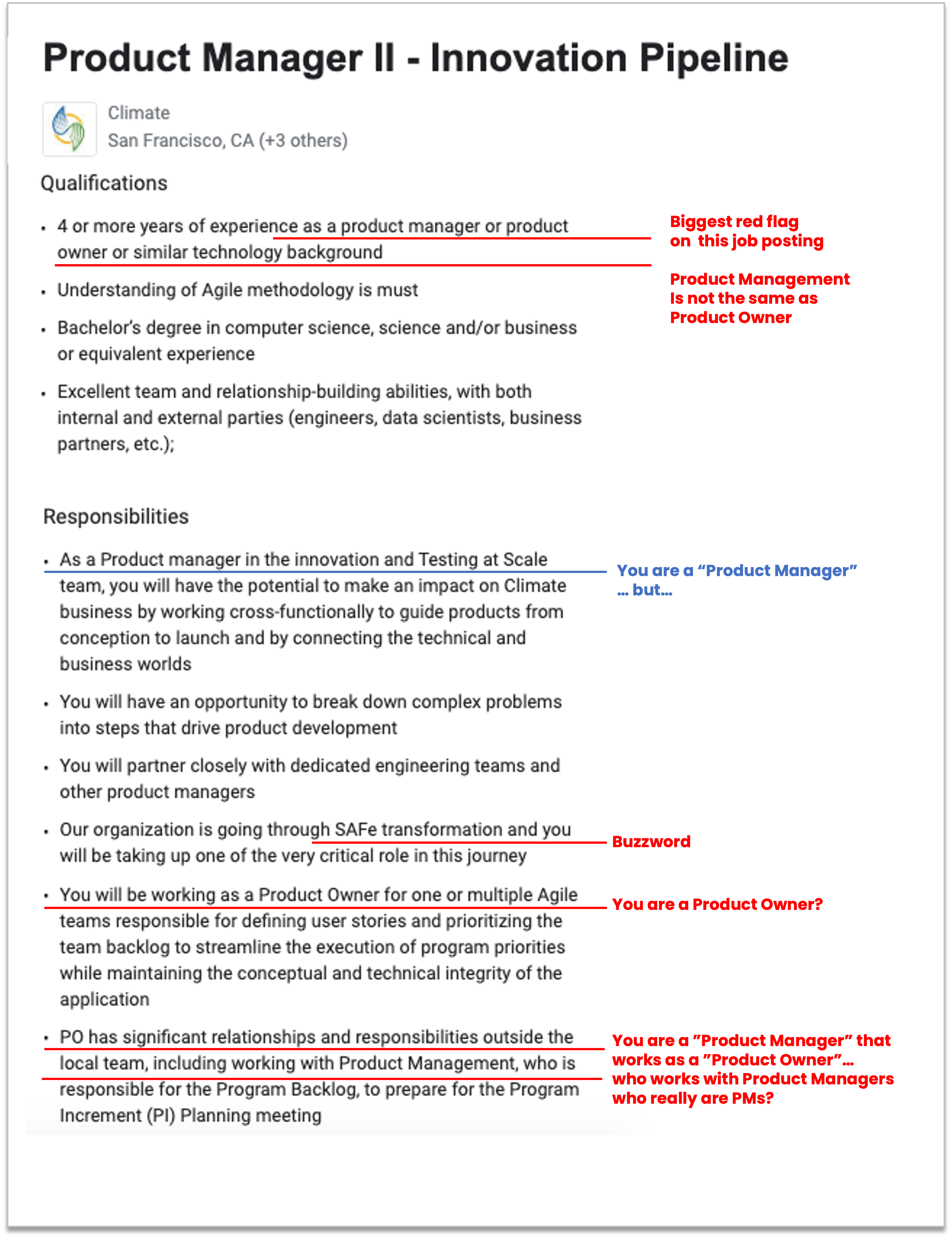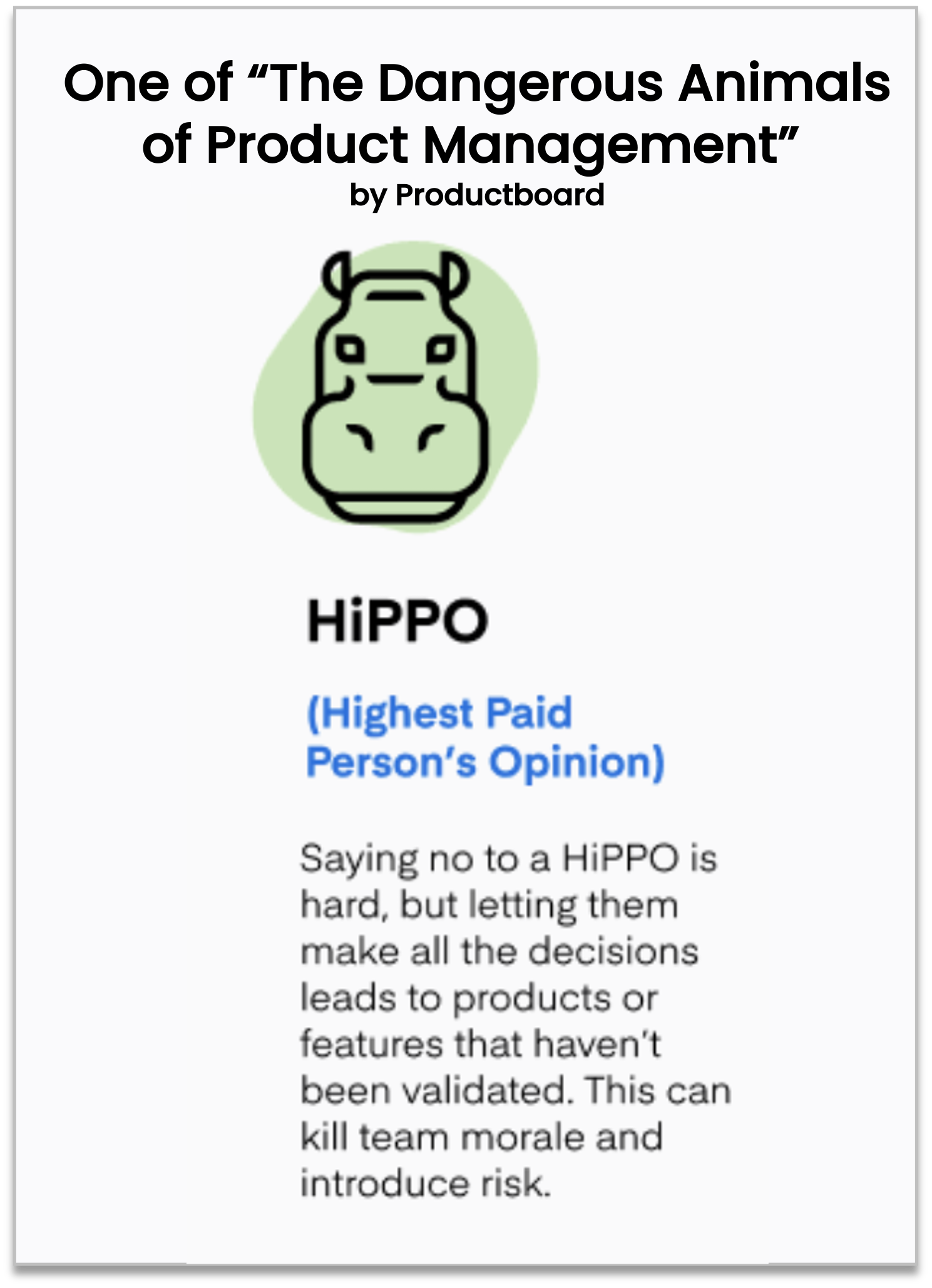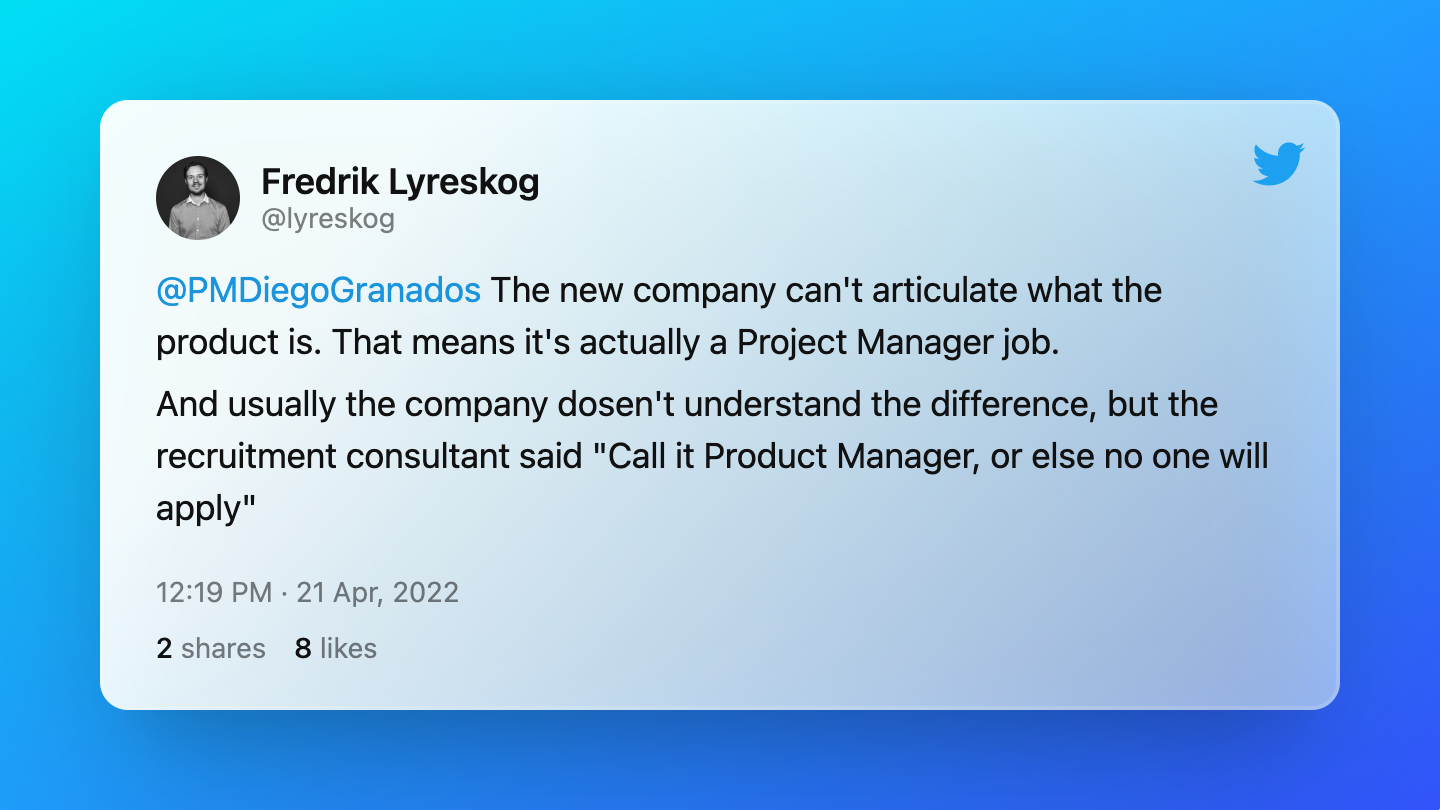
PTPA #004: How to avoid Product Manager roles that are not really Product Management
Sep 10, 2022Read Time: 5 min
A quick search online for “Product Management” shows that there are more than 250k open jobs for Product Management.
Are all of these good Product Manager jobs? Most likely not.
Interest in Product Management is growing among both employers and aspiring (and current) Product Managers.
This growth leads to more job opportunities, more published content, and a larger community.
However, this rapid expansion comes with growing pains and not all companies (and candidates) fully understand the role of a Product Manager.
Navigating this ocean of opportunities to find the right role can be arduous. While there are many others, in this article I want to share with you the 5 main things I look out for when I search for Product Manager roles:
When reading the Job Description:
- The job should match the title
- Don’t focus on the level of the role, focus on the impact
- Product Manager and Product Owner are not interchangeable
When interviewing with the company:
- You should have authority over the backlog
- Your success shouldn’t be measured by the number of features released
Let’s look at each one closely
Reading the Job Description
1. The job should match the title
Companies that don’t understand the role of a Product Manager in their organization end up adding the title of “Product Manager” to any role that works with Engineers and Customers.
Many job descriptions that are not really a Product Manager role try to make it sound exciting by mentioning that you will have ownership, work with customers, and work with engineers… but when you look at the rest of the responsibilities, and even the qualifications, it doesn’t even begin to cover the job that Product Managers do.
Even though the responsibilities between the different levels of Product Management change, companies that do understand the role tend to include, among other things, these terms in their job descriptions:
- Execute end-to-end
- Prioritize/Own backlog
- Define Product vision and strategy
- Work cross-functionally with engineers and designers
Look closely at job descriptions to see whether you really have any control over a product, a service, or a platform, or if you’ll just have the title but none of the broader responsibilities of a Product Manager.

2. Don’t focus on the level of the role, focus on the impact
I know VPs of Product and CPOs who have less than 5 years of experience in Product Management, and I also know Product Managers who have more than 10 years of experience and their title is still the same. Needless to say, not at the same company.
As I look for roles in the Product Management space, I don’t obsess over the specific level in the title (PM vs. Sr. PM) and I focus more on the possible impact I may have on the organization.
Whenever I read job descriptions, I ask myself 2 questions to determine whether it is a good opportunity to explore, regardless of the level of the title (PM vs. Sr. PM)
- Is the product a core product for the company? (high visibility) or is it a new initiative/bet that the company is investing in? (could be high visibility but not guaranteed)
- Does the job description describe how the PM will focus on strategy and vision? (Closer to Sr. PM) or does the job description focuses more on execution (Closer to PM)?
You can also ask similar questions during your coffee chats/interviews to spot the level of this role:
- How is success measured for Product Managers in this role? (A much higher focus on execution will tell you it’s closer to PM than Sr. PM)
- Where do PMs in the team spend most of their time? (This question also helps with spotting a red flag discussed below)
Don’t discard jobs simply because the title doesn’t meet your expectations. Read the job description carefully and ask questions (coffee chats) before you discard jobs that seem interesting to you.

3. Product Manager and Product Owner are not interchangeable
Product Manager and Product Owner are not the same things and they are not interchangeable. If you are curious about the difference between them, you can check out this video I made about it.
Many organizations confuse these two titles, ignoring that PM is a job while PO is a role within Scrum. Product Owner can be a path into Product Management, which can make a good first role to learn about product development.
However, if you are an experienced PM, you need to be careful with companies that confuse these roles. You might end up steering away from Product Management.
You can easily spot these roles as they’ll include Product Owner in the job description, as well as buzzwords like Scrum, SAFe (Scaled Agile Framework), User Stories, and Acceptance Tests.

When Interviewing
4. You should have authority over the backlog
Product Managers should have a saying over the backlog for their products. While the Job Description might say you do, the day-to-day can be very different.
The most common trap is that your control over the backlog is symbolic:
- A HIPPO (Highest Paid Person’s Opinion) may be the one dictating what the team builds - A director, a VP, the Founder/CEO.
- If there’s no good Product Culture, Engineers might be dictating the backlog, with the PMs trying to catch up on what engineers built.
Another important thing to note is that working on JIRA and moving tickets around is not the same as having authority and control over a backlog.
If you work as a Product Manager in a service area helping to build features for other products of the company, you may not have as much control over the backlog, but you still have the power to influence decisions and roadmaps.
Unfortunately, this can’t be spotted easily while reading the job description, but you can do it during coffee chats and interviews.
Here are a few questions you can ask:
- Who decides what goes in the roadmap during planning cycles?
- How are decisions for new features made? Who makes the decisions?
- What was the last feature that your team build and who made the decision to build it?
- Do decisions for the roadmap and backlog come from the top? Or does each Product Manager decides what their team is going to work on?

5. Your success shouldn’t be measured by the number of features released
Disguised as “Product Managers”, many companies are looking for Project and Program managers that can help them bring projects to completion.
While Product Managers do focus on execution and should have project and program management skills, your job should not be to only work on making sure to release an already established plan. The keywords here are “already established”.
Product Managers should spend some time working on other things besides execution, for example, working on vision and strategy, as well as doing customer research.
How can you spot this during coffee chats or an interview? Here are a few questions to ask:
- How often do PMs on the team talk to customers?
- How do PMs on your team spend most of their time?
- When was the last time that PMs on the team worked on a strategy or vision document?

You can’t control what companies post or how they interpret the role of a Product Manager. However, you can control how much you inform yourself to identify red flags and avoid Product Manager roles that give you the title, but not the responsibilities.
See you next week!
Whenever you're ready, there are 3 ways I can help you:
- Crush your Product Manager interviews and get an offer here. (Join 450+ students!)
- Schedule a 1:1 session with me for Mock Interviews and Career Guidance here.
- Promote your brand/business to 6K+ Newsletter subscribers by sponsoring content.
Helping Everyone To Land Their Next Product Manager Job
Join 8,000+ current and aspiring Product Managers in my Newsletter. Every email gives you a quick and actionable tip on landing your next Product Manager offer.
I hate SPAM. I will never sell your information, for any reason.

